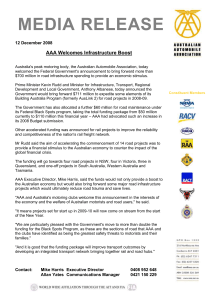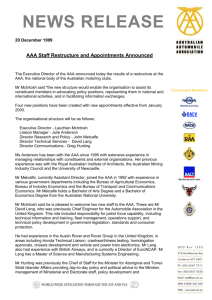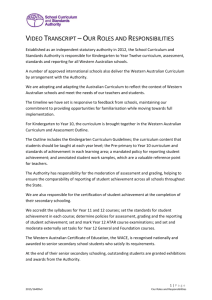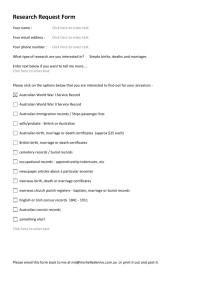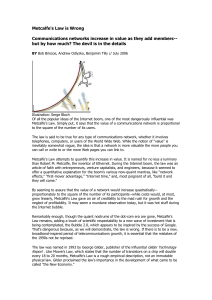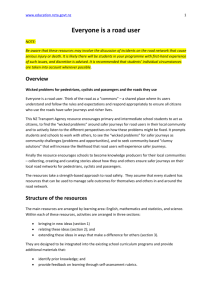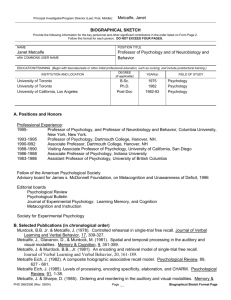07.01.09_1600 road deaths in 2006
advertisement
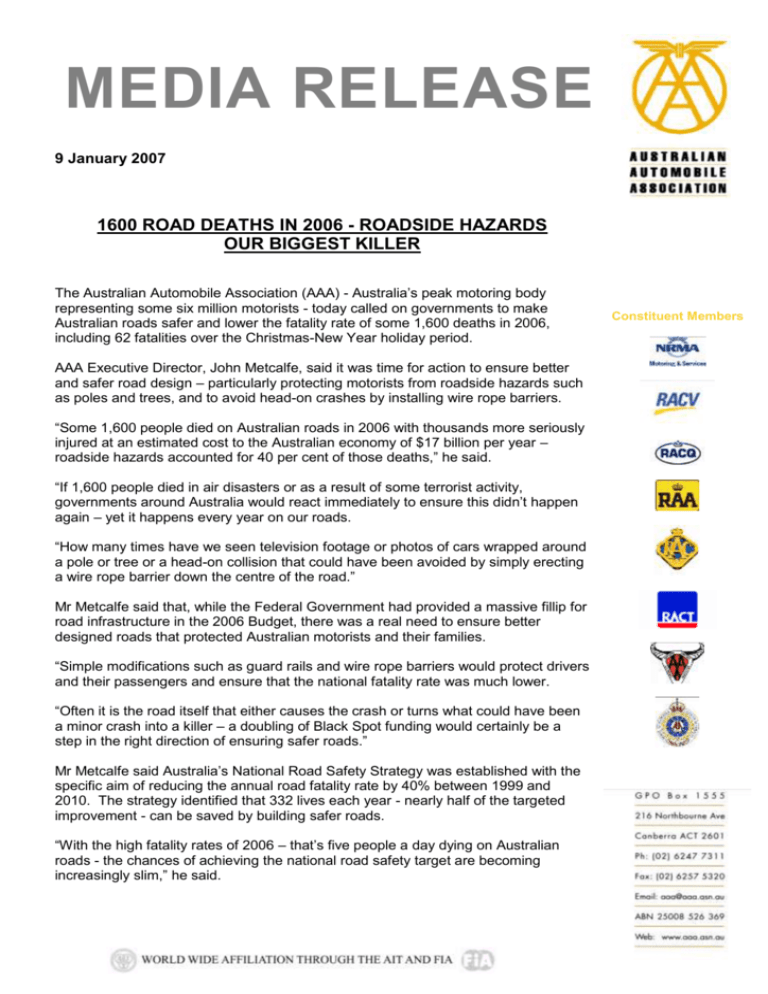
MEDIA RELEASE 9 January 2007 1600 ROAD DEATHS IN 2006 - ROADSIDE HAZARDS OUR BIGGEST KILLER The Australian Automobile Association (AAA) - Australia’s peak motoring body representing some six million motorists - today called on governments to make Australian roads safer and lower the fatality rate of some 1,600 deaths in 2006, including 62 fatalities over the Christmas-New Year holiday period. AAA Executive Director, John Metcalfe, said it was time for action to ensure better and safer road design – particularly protecting motorists from roadside hazards such as poles and trees, and to avoid head-on crashes by installing wire rope barriers. “Some 1,600 people died on Australian roads in 2006 with thousands more seriously injured at an estimated cost to the Australian economy of $17 billion per year – roadside hazards accounted for 40 per cent of those deaths,” he said. “If 1,600 people died in air disasters or as a result of some terrorist activity, governments around Australia would react immediately to ensure this didn’t happen again – yet it happens every year on our roads. “How many times have we seen television footage or photos of cars wrapped around a pole or tree or a head-on collision that could have been avoided by simply erecting a wire rope barrier down the centre of the road.” Mr Metcalfe said that, while the Federal Government had provided a massive fillip for road infrastructure in the 2006 Budget, there was a real need to ensure better designed roads that protected Australian motorists and their families. “Simple modifications such as guard rails and wire rope barriers would protect drivers and their passengers and ensure that the national fatality rate was much lower. “Often it is the road itself that either causes the crash or turns what could have been a minor crash into a killer – a doubling of Black Spot funding would certainly be a step in the right direction of ensuring safer roads.” Mr Metcalfe said Australia’s National Road Safety Strategy was established with the specific aim of reducing the annual road fatality rate by 40% between 1999 and 2010. The strategy identified that 332 lives each year - nearly half of the targeted improvement - can be saved by building safer roads. “With the high fatality rates of 2006 – that’s five people a day dying on Australian roads - the chances of achieving the national road safety target are becoming increasingly slim,” he said. Constituent Members 2. “Authorities are right to point out that motorists have a responsibility to drive safely, but drivers are fallible and make mistakes – they should not have to pay with their lives for a momentary lapse in concentration.” “The AAA’s Australian Road Assessment Program (AusRAP) provides all governments and road users with a star rating of a road’s safety. These ratings can be viewed at www.ausrap.org and identify what makes a road safe or unsafe.” Mr Metcalfe also noted the need to ensure better training and education for younger drivers as a priority alongside the need to improve road design and maintenance. “One initiative AAA is promoting to governments is the introduction of Parent Plus – a scheme which provides a free lesson for parents to assist them in teaching their own children to drive,” he said. “Parent Plus provides parents with the necessary understanding and confidence to be able to get out on the road and educate their children on how to drive safely.” * * * * * * * Contact: John Metcalfe Executive Director Allan Yates Communications Manager 0418 978 899 0421 150 229
